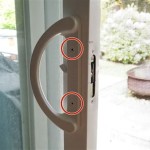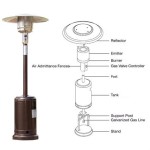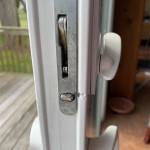What Is The Standard Diameter of a Patio Umbrella Pole?
Choosing the right patio umbrella involves more than just selecting a pleasing color and pattern. A crucial, often overlooked aspect is the diameter of the umbrella pole. This seemingly minor detail significantly impacts the umbrella's stability, compatibility with various bases, and overall functionality. Understanding standard pole diameters and their implications is essential for making an informed purchase and ensuring long-lasting enjoyment of your outdoor space.
Common Patio Umbrella Pole Diameters
Patio umbrella pole diameters typically range from 1 inch to 2 inches, with some specialized models extending beyond this range. The most commonly encountered diameters are 1.5 inches and 1.9 inches. These measurements refer to the outer diameter of the pole itself.
Umbrellas with a 1.5-inch diameter pole are often considered standard and are widely available. They are generally suitable for smaller to medium-sized umbrellas and offer a good balance between stability and weight. Many readily available umbrella bases are designed to accommodate this size.
Umbrellas with a 1.9-inch diameter pole are generally associated with larger, heavier-duty umbrellas. This increased diameter provides greater stability, particularly for larger canopies that catch more wind. While not as prevalent as 1.5-inch poles, 1.9-inch poles are becoming increasingly common as people opt for larger, more robust shade solutions.
Less common sizes, such as 1-inch and 2-inch diameter poles, also exist. 1-inch poles are usually found on smaller, lighter umbrellas designed for portability or individual use. 2-inch and larger diameters are typically reserved for commercial-grade umbrellas or very large residential models where maximum stability is paramount.
Matching Pole Diameter to Umbrella Base
One of the most critical considerations related to pole diameter is compatibility with the umbrella base. The base must securely hold the pole to ensure the umbrella remains stable, especially in windy conditions. Using an incorrectly sized base can lead to a wobbly umbrella or even cause it to tip over, potentially causing damage or injury.
Most umbrella bases are designed to accommodate a specific range of pole diameters. Many bases feature adjustable collars or inserts that allow them to accommodate different pole sizes. It's crucial to check the base specifications and ensure they are compatible with the umbrella's pole diameter before making a purchase. Attempting to force a pole into an inappropriately sized base can damage both the pole and the base.
When selecting a base, consider the size and weight of the umbrella canopy. Larger canopies require heavier, more stable bases, even if the pole diameter is within the base's accepted range. This added weight helps to counterbalance the force of the wind and prevent the umbrella from tipping.
Factors Influencing Pole Diameter Choice
Several factors beyond base compatibility influence the choice of pole diameter. The overall size and weight of the umbrella are primary considerations. Larger, heavier umbrellas require thicker poles for adequate support and stability. Conversely, smaller, lighter umbrellas can function effectively with thinner poles.
Wind conditions in the intended location also play a role. Areas prone to strong winds necessitate a sturdier umbrella with a thicker pole and a heavier base. In calmer environments, a thinner pole may suffice.
The umbrella's intended use is another factor. For example, a market umbrella used for commercial purposes may require a thicker pole and a more robust base compared to a residential patio umbrella. The frequency of use and the level of desired stability also influence the selection process.
Material considerations also come into play. Some materials, like aluminum, offer a good balance of strength and lightness, allowing for larger diameter poles without excessive weight. Other materials, such as wood, may require thicker diameters to achieve the same level of strength.
Ultimately, choosing the appropriate pole diameter involves carefully balancing factors such as umbrella size, weight, wind conditions, intended use, and material properties. Carefully considering these factors will ensure the selection of a patio umbrella that provides optimal shade, stability, and long-lasting performance.

The Ultimate Patio Umbrella Buyers Guide

Patio Umbrella Guide Buy With Confidence Now

Patio Umbrella Size Guide Midtownumbrellas Com

10 Ft L X 6 5 W Rectangular Patio Umbrella Market With Push On Tilt Aluminum Pole In Blue H2sa05ot018 The Home Depot

How To Measure A Patio Umbrella Specialist

Hampton Bay 9 Ft Aluminum Round Market Outdoor Patio Umbrella In Aloe Uca171098 Al The Home Depot

Patio Umbrella Guide Buy With Confidence Now

Sunny Patio Umbrella Lower Pole Dia 1 5 Length 33 Com

Angeles Home 15 Ft Extra Large Steel Pole Double Side Market Patio Umbrella In Tan Mop 870755cf The Depot

Patio Umbrella Size Guide Midtownumbrellas Com








